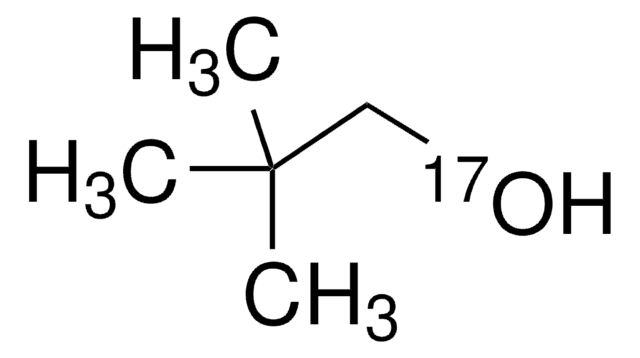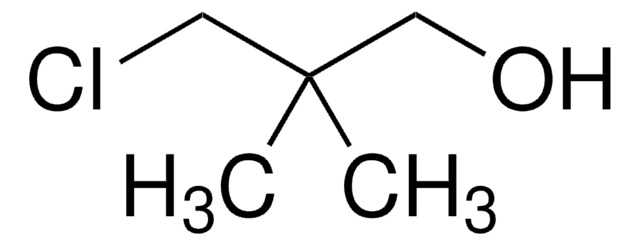N7206
2,2-Dimethyl-1-propanol
99%
Sinónimos:
tert-Butylmethanol, Neoamyl alcohol, Neopentanol, tert-Butyl carbinol, Neopentyl alcohol
About This Item
Productos recomendados
vapor pressure
16 mmHg ( 20 °C)
assay
99%
form
crystals
bp
113-114 °C (lit.)
mp
52-56 °C (lit.)
density
0.818 g/mL at 25 °C (lit.)
SMILES string
CC(C)(C)CO
InChI
1S/C5H12O/c1-5(2,3)4-6/h6H,4H2,1-3H3
InChI key
KPSSIOMAKSHJJG-UHFFFAOYSA-N
¿Está buscando productos similares? Visita Guía de comparación de productos
Categorías relacionadas
Application
- 2,2-Dimethyl-1-propanol can be used in the synthesis of surfactant that stabilize reduced graphene oxide (rGO) dispersion.
- Biodiesel containing branched-chain esters prepared by the transesterification of vegetable oils with 2,2-dimethyl-1-propanol has been reported to show lower crystallization temperature when compared to methyl and ethyl ester counterparts.
signalword
Danger
hcodes
Hazard Classifications
Acute Tox. 4 Inhalation - Flam. Sol. 1 - STOT SE 3
target_organs
Respiratory system
Storage Class
4.1B - Flammable solid hazardous materials
wgk_germany
WGK 1
flash_point_f
82.4 °F - closed cup
flash_point_c
28 °C - closed cup
ppe
Eyeshields, Gloves, type P3 (EN 143) respirator cartridges
Certificados de análisis (COA)
Busque Certificados de análisis (COA) introduciendo el número de lote del producto. Los números de lote se encuentran en la etiqueta del producto después de las palabras «Lot» o «Batch»
¿Ya tiene este producto?
Encuentre la documentación para los productos que ha comprado recientemente en la Biblioteca de documentos.
Los clientes también vieron
Nuestro equipo de científicos tiene experiencia en todas las áreas de investigación: Ciencias de la vida, Ciencia de los materiales, Síntesis química, Cromatografía, Analítica y muchas otras.
Póngase en contacto con el Servicio técnico












